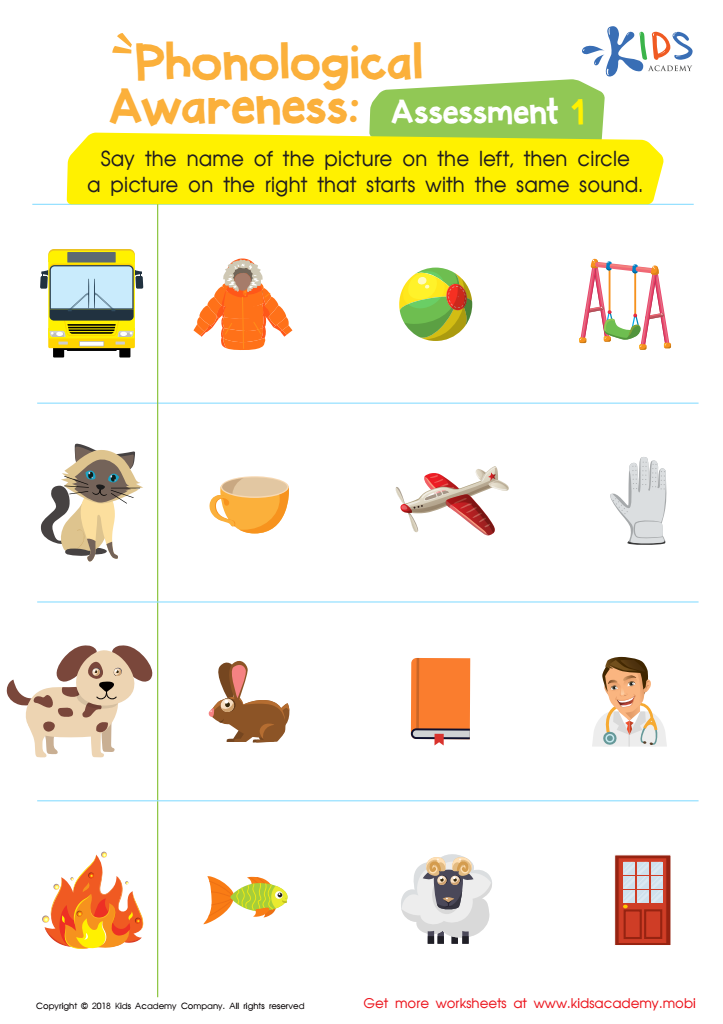Letter recognition Normal Elementary Phonics Worksheets for Ages 4-9
3 filtered results
-
From - To
Explore our Letter Recognition Normal Elementary Phonics Worksheets designed for children ages 4-9. Our expertly crafted worksheets support foundational literacy skills, focusing on letter identification and phonics to make learning engaging and effective. Perfect for home or classroom settings, these printable resources offer a variety of interactive activities, including tracing, matching, and coloring. Whether your young learner is just starting their alphabet journey or strengthening their existing skills, our worksheets are tailored to meet their educational needs. Boost their confidence and set the stage for reading success with our comprehensive set of worksheets.


Long and Short U Worksheet


Long and Short E Worksheet


Phonological Awareness: Assessment 1 Worksheet
Parents and teachers should care about letter recognition and elementary phonics for children ages 4-9 because these foundational skills are critical for literacy development. During this age range, children are in a prime period for learning to read and write, and mastering letter recognition and phonics are key steps in this process.
Letter recognition—knowing the names and sounds of letters—enables children to understand the alphabet's role in written language. This skill is connected to decoding, which allows children to sound out and understand words independently. This is important as it lays the groundwork for fluent reading, a crucial component of educational development and lifelong learning.
Elementary phonics, which involves teaching the relationships between letters and the sounds they represent, strengthens reading comprehension and spelling skills. When kids grasp phonics rules, they become capable of reading new words by breaking them down into smaller, more manageable sounds, which builds their vocabulary and comprehension gradually.
Furthermore, early success in reading leads to a positive attitude toward learning and builds confidence. Children who do not develop these skills early on may struggle with reading tasks later, which can affect their overall academic performance, self-esteem, and even future educational and career opportunities. Therefore, prioritizing letter recognition and phonics sets a strong foundation for literacy, ensuring children are equipped for future success.
 Assign to My Students
Assign to My Students













